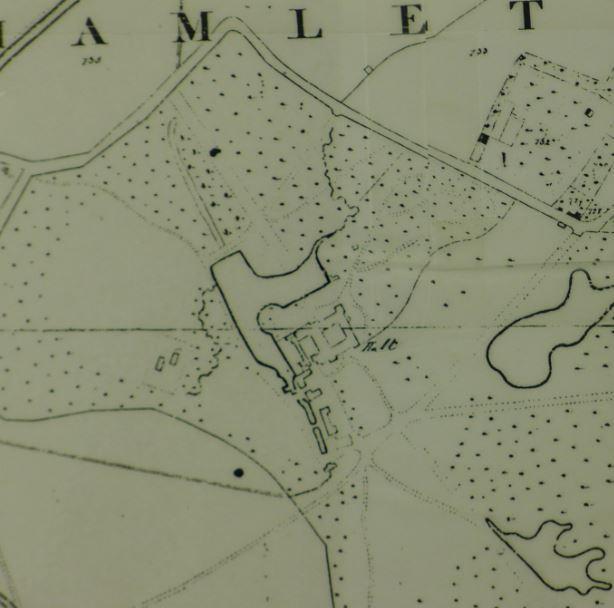History of Dunham Massey
Historical development of Dunham Massey
The manor of Dunham Massey has a long history of settlement, largely due to its historic connection with the ancient city of Chester. There have been, for example, Neolithic, Bronze-Age and Romano-British archaeological finds in the wider area, the presence of which suggest that the area was inhabited or at least navigable in these early ages.
The first mention of a settlement at Dunham Massey is found in 1086, which records a house in the manor of Dunham Massey owned by Hamo de Massey. It also records the settlement as a burgage, paying tenure to the Norman Earls and Bishops of Chester. These burgages were of considerable value to their occupying lords in this period, and so it is likely that Dunham Massey was locally prominent.
A castle at Dunham Massey is recorded in 1173 and again in 1323, although it is not clear whether this was additional to or the same as the house recorded in the 11th century for the first Hamo de Massey. By the 17th century, however, the castle had been destroyed and the resultant mound was used as a viewing platform. This mound was much reduced by the 19th century, and today there remains no trace of the castle, except perhaps for a mound which may be the remains of earthworks for the castle.
Dunham Massey remained in the hands of the Massey family until the mid-14th century, at which point the last Baron de Massey died without an heir. The manor and its manor house, also called Dunham Massey, was then passed to the Inghams, the Stranges, the Fittons and the Venables, before finally being acquired by the Booth family of nearby Barton, in whose hands the lands remained until the mid-18th century.
The association of the Booth family with Dunham Massey is of considerable significance. Successive Booths were of national prominence, producing a number of important ecclesiastical figures in the 15th and 16th centuries, and active political figures in the 16th and 17th centuries. Reflecting this power, the family held several titles, beginning with the Barony of Dunham Massey. In the 17th century, the Booths acquired the title of Baron Delamer. This was given to Sir George Booth by Charles II in 1661 for his Royalist sympathies in the Civil War, particularly for his title role in the (ultimately-unsuccessful) so-called Booth’s rising of 1658 against the Parliamentarians. The Booths also subsequently acquired two further titles of Earl of Warrington and Earl of Stamford, which were later amalgamated into the single title of Earl of Stamford and Warrington.
The Booth family also had a notable local impact. For example, a William Booth was responsible for the construction of the new house on a moated platform at Dunham Massey in the early 17th century. This replaced an older building which likely stood on or near to the current site, which was surrounded by an historic deer park. This house remained uncompleted by the time of William Booth’s death and was completed after the period of Civil War in the later 17th century by his son, George Booth, 1st Baron Delamer (1622-1684).
The house which stands today is not however in its primary state. In the first quarter of the 18th century, it was remodelled to the designs of John Norris, while in the third quarter of the 18th century the last Booth heir, Lady Mary Booth, oversaw the remodelling of the landscape, work which was reputedly undertaken by Lancelot ‘Capability’ Brown.
The house was then acquired by the Grey family via the marriage of Lady Mary Booth, and remained occupied by the Grey family until the 7th Earl of Stamford’s scandalous second marriage to a former circus performer, Catherine Cocks, at which stage the house and wider estate were abandoned.

Dunham Massey Hall depicted in the Bowdon Parish tithe map, 1836-51 (reproduced with permission of Trafford Local Studies Centre)
After reoccupation in 1906 by the 9th Earl of Stamford, William Grey, the house was significantly refurbished by J. Compton Hall. Compton Hall is also notable for restoring St Margaret’s Church at Dunham Massey in the same period, and for writing an account of the history of Dunham Massey Hall, encouraged by the 9th Earl.
Roger Grey, the 10th Earl of Stamford (1896-1976) was the last owner of the Dunham Massey estate, and a careful caretaker of the house and wider estate. At his death in the 1970, the house and 3,000 acre estate were bequeathed to the National Trust, in whose hands they remain today.
The area’s retention of much of its historic character can largely be attributed to its long history of private ownership, which has afforded protection from the dual processes of land sales and speculative development. This has meant that successive improvements in transport, such as the cutting of the Bridgewater Canal in the 1760s and the establishment of the Manchester and Altrincham Railway in the 1840s, had a far less significant impact on the character of the area. This stands in sharp contrast with Trafford more broadly, where these new waterways and railway lines have successively transformed the wider area into a conurbation for the city of Manchester.